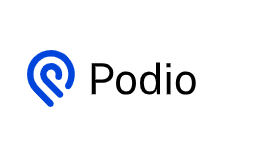
In contemporary projects, multiple team members across different locations often collaborate on digital files. This necessitates the use of dedicated project collaboration software. Whether it is a traditional company or an eCommerce business, organizations require project management collaboration software with distinct functions and features that align with their project needs. Such a tool enables efficient project execution from diverse locations, ensuring prompt and convenient task completion for all team members.
For individuals assigned to project management or team members seeking a tool to enhance project efficiency, it is essential to gain comprehensive knowledge about this software. This knowledge will enable an informed decision when selecting collaboration software for current or future projects.
What is Project Collaboration Software?
Project collaboration software serves as a versatile platform that facilitates the exchange, manipulation, and organization of various data formats among multiple users or systems. This software category empowers remote individuals, whether two or more, to collaborate seamlessly on a shared task or project. If a project involves members working both remotely and in-house, this tool enables asynchronous task contributions.
It is crucial to note that there isn't a one-size-fits-all project management collaboration software. Therefore, individuals should select a software solution that aligns most effectively with their unique project requirements. There are various types of collaboration software available for project use, including:
Whiteboards
Cloud storage
Instant messaging
File sharing
Calendar sharing
Document synchronization
Video-conferencing
Different software options offer varying combinations of these functionalities. Regardless of the specific features a collaboration software possesses, individuals should conduct thorough research to ensure compatibility with their project needs.
Best Project Collaboration Software in 2023
Here are the top five project collaboration software options for consideration in 2023:
No.1 CADMAI

CADMAI Software GmbH is a software company with extensive knowledge of creating and processing technical data. One product - called CADMAI Designer - represents a relational CAD (computer-aided design) system primarily dedicated to parametric 2D and 3D design.
If your project involves a lot of 2D and 3D modeling tasks or digital twin modeling, this is the perfect project collaboration software to get
CADMAI also offers a programming library designed to work with systems like ERP, EDM, PDM, or PIM. In addition to that CADMAI has developed WebGL-Publisher, a WebGL based Framework to visualize 3D Data in Web Browsers. It has software converters allowing users to generate WebGL-Publisher models from the user's 3D CAD models. These libraries help to create, render 3D objects and generate parametric variants within native applications or web shops
If your organization is involved in web publishing geometric data in 3D, then you'll find CADMAI's WebGL Publisher support extremely helpful.
CADMAI is also primarily used in different areas, such as upstream modeling for CAD geometry-based applications like CAM (computer-aided modeling) and CAE (computer-aided engineering) systems.
Meanwhile, its in-house portal, Poi3d.com, is ideal for design and engineering projects requiring multi-user collaboration for the presentation and visualization of 2D documents and 3D models.
It offers many collaboration features that facilitate real-time and asynchronous collaboration between multiple team members who are both onsite and offsite.
Features
1. Upload/share 3D models from CAD formats with other users
The CADMAI poi3d portal enables users to easily share their 3D CAD models with others, all through a web browser. No need for separate software installations. This means team members can share their 3D CAD models from anywhere. The portal supports standard formats like STEP, JT and 3D XML, making collaboration on various 3D CAD models efficient.
2. Upload/share 2D documents with other users
Users can also quickly share 2D documents with their team members using the poi3d portal. It supports common formats like 2D PDF and multipage tiff, simplifying document sharing.
3. Create work groups to access to 3D models and 2D documents
The portal allows users to establish work groups with restricted access, ensuring that only authorized members can access relevant 2D documents and 3D models.
4. Document annotation for information exchange
Adding annotations to 2D and 3D documents is effortless. These annotations serve as a means for sharing information and collaborating within the group.
5. Add 3D positions in VR environment to identify precise locations
Users can insert 3D positions into a virtual reality (VR) environment, allowing others to quickly view them. This feature is particularly useful for plant designers and architects, as it helps clients visualize and pinpoint specific components within a VR setting.
6. Add instructions to 3D models for maintenance work
Users have the option to attach 3D instructions to their 3D models, aiding those involved in maintenance work by providing clear project requirements.
7. Compare two 3D models to show structural differences
For projects involving multiple 3D models, the portal offers a comparison tool to highlight structural differences between them.
8. Assign materials to 3D components
Product designers and managers can easily assign materials to 3D components using the portal, streamlining the design coordination process before the project commences.
Advantages
1. Heightened security
CADMAI's poi3d portal prioritizes data security. Only authorized members of created workgroups can access the models and documents. Moreover, the portal utilizes model representations, ensuring the safety of your actual 3D models. Additionally, it avoids using cookies to further protect user data.
2. Robust performance
The portal offers excellent performance. Models within it have compact file sizes, resulting in faster loading times despite high resolutions. Special optimizations enhance the efficient handling of 3D models with multiple components.
3. Simplicity
CADMAI's software is user-friendly and intuitive, making it easy for multiple users to collaborate without requiring specialized training.
4. Multi-device access
The poi3d portal is optimized for mobile devices, enabling collaborators to perform tasks on tablets or smartphones.
5. Accessibility
Users can access the portal without the need to install additional applications. All of the portal's functions are readily available.
6. Independency
Users can operate the portal independently, as poi3d is designed to grant users complete control over the system.The portal can be hosted individually for each customer, either on the customer's website or in its own subdomain where the customer can control the user registration. This ensures that access is only granted to known users.
7. Versatility
The portal serves various applications, including engineering, architecture, plant design, manufacturing, booth building, and product design.
No.2 ProProfs Project

ProProfs Project is a project collaboration software that allows collaborators to suggest changes and offer or receive feedback through task comments. The software's UI features push notifications to members' devices for real-time updates on task progress. It's an excellent software for users who need a collaboration tool to inspire teamwork among individual members.
Features
1. Streamline repetitive or time-consuming tasks through automation.
ProProfs Project's task automation feature makes things run more efficiently.
2. Stay informed with email alerts and notifications for project updates.
Real-time alerts and notifications keep everyone in the loop.
3. Define clear workflows by setting task dependencies.
There is no more room for ambiguities with defined workflows and task dependencies.
4. Propose alterations or provide and receive feedback through task comments.
Task comments allow for smooth collaboration among team members via a feedback mechanism.
5. Effortlessly merge with your existing toolkit.
You can make projects run smoother by fusing the ProProfs project management collaboration software with the toolkit you already use.
6. Establish task priority to determine urgency or significance.
Let everyone know which tasks to prioritize by setting priority levels.
7. Associate pertinent files with tasks.
ProProfs Projects lets you link specific tasks to relevant files for easier project management.
Advantages
1. Stay updated on project developments via its mobile application.
The mobile app lets members keep track of project progress.
2. Modify workflows easily, adjusting due dates or reallocating resources in seconds.
You can quickly alter how projects run by tweaking relevant resources and deadlines.
4. Access AI-driven reports that provide in-depth insights into project advancement and team effectiveness.
These insights let users view their projects' overall efficiency and progress, including the individual performances of team members.
5. Establish a baseline to compare projected and actual project timelines.
Baselines can help team members and project managers gauge projected or actual timelines.
6. Seamlessly switch between Gantt, Kanban, List, and Calendar views for up-to-the-minute progress tracking.
You can cruise between these views to rapidly track how your project is coming along.
No.3 Jira

The Jira Software by Atlassian stands out as a top-tier online project collaboration software designed for agile teams. Users can efficiently divide extensive projects into manageable tasks with its widely used Scrum template. You can set up a backlog and roadmap board and kickstart work on incoming tasks immediately. Furthermore, this tool empowers you to initiate actions effortlessly through Jira's no-code automation feature.
Features
1. Easily shift tasks across the board with drag-and-drop convenience.
This user-friendly feature lets users quickly rearrange tasks for better project flow.
2. Utilize DevOps visibility to maintain work progress on course.
This allows you to ensure your project runs as planned without surprises or problems.
3. Seamlessly connect with top-tier third-party applications.
Jira lets users pair with third-party applications without requiring special permissions.
4. Arrange tasks to tackle pressing matters promptly.
You can ensure that urgent concerns are immediately addressed by prioritizing tasks through quick rearrangements.
5. Tailor workflows to suit your preferences.
You can adjust workflows based on your project requirements or preferences.
Advantages
1. Enhance decision-making with data-driven reports that provide valuable insights into the metrics that matter.
Jira offers data-based reports to help project decision-makers make better judgment calls.
2. Ensure precise resource allocation through effective capacity planning with the tool.
No more wasting valuable project resources with Jira's resource allocation feature.
3. Gain immediate visibility into progress by labeling task statuses as "In Progress," "To Do," "Released," and "Done."
These labels can get everyone apprised of the progress of individual tasks.
No.4 Podio

Podio is a user-friendly project management collaboration software offering a dedicated space for team members to coordinate and achieve their collective goals efficiently. Podio features robust chat features to facilitate swift idea exchange and obstacle resolution. Furthermore, Podio allows team members to inquire and share knowledge through shared activity streams.
Features
1. Plan events efficiently with the shared calendar feature.
This nifty feature lets everyone view planned events on their devices, so there's no excuse for absences.
2. Stay connected and make instant updates using the mobile app from anywhere.
The dedicated mobile app lets team members collaborate on the go and receive project notifications.
3. Post images, links, and documents to activity streams for sharing.
Workgroup members can easily upload documents, links, and photos via activity streams accessible to everyone.
4. Collaborate by sharing task-related files with team members.
This facilitates quick collaboration among team members, thus enhancing productivity and efficiency.
5. Effortlessly access and utilize customizable templates.
The templates can be quickly customized to satisfy project requirements.
Advantages
1. Stay informed about team members' leave durations using the Vacation app, enabling better work planning.
Project managers can avoid hiccups due to absences with the Vacation app.
2. Efficiently manage tasks by setting reminders and establishing recurring schedules as needed.
This feature is critical in managing different tasks more efficiently to achieve project targets and deadlines.
3. Easily monitor your project expenses with comprehensive cost reporting.
You can avoid going over budget with Podio's cost reporting feature.
No.5 Wrike

Wrike, like other leading project collaboration software, presents intriguing capabilities. With Wrike, you can effortlessly initiate automated workflows, reducing manual workload and saving significant time. Its distinctive nesting feature will also let you classify project tasks and subtasks into various folders, thus simplifying project data organization.
Features
1. Efficiently plan tasks using Gantt charts.
These charts are great for planning tasks to achieve optimum project efficiency.
2. Stay informed about project progress on the go with mobile accessibility.
The mobile support lets Wrike ensure team members receive push notifications on their mobile devices so they know exactly how projects are going.
3. Enhance your insight into various work streams through cross-tagging.
This nifty feature gives project managers and team members an appraisal of different work streams so that they can make better decisions.
4. Tailor work items to meet your specific needs.
You can use Wrike to customize work items based on your project requirements.
Advantages
1. This tool fosters the connection between people and processes, streamlining work seamlessly from inception to completion.
Wrike is an excellent tool for project managers who value streamlined processes and unmatched collaboration.
2. Gain a real-time overview of ongoing tasks and their responsible individuals through live activity streams.
The streams allow team members to see how tasks progress in real-time.
3. Identify performance gaps and optimize workforce management with insightful performance reports.
These performance reports are beneficial in guaranteeing an efficient workforce and avoiding performance issues.
Conclusion
Selecting the most suitable project management collaboration software can be a challenging task. However, this review aims to assist individuals in making an informed choice that aligns with their specific needs. It is important to note that the chosen project collaboration software should ideally encompass most, if not all, of the features necessary to fulfill project requirements. Given the abundance of project management collaboration software options available, conducting thorough research to understand their capabilities is a vital step in identifying the ideal tool for current or future projects.
ⓒ 2025 TECHTIMES.com All rights reserved. Do not reproduce without permission.




